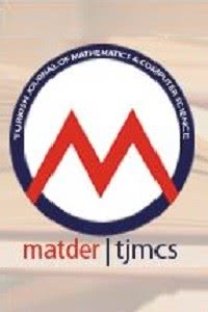A Truncated Bell Series Approach to Solve Systems of Generalized Delay Differential Equations with Variable Coefficients
A Truncated Bell Series Approach to Solve Systems of Generalized Delay Differential Equations with Variable Coefficients
___
- [1] Abdel-Halim, I., Hassan application to differential transformation method for solving systems of differential equations, Appl Math Model, 32(12)(2008), 2552–2559.
- [2] Başar, U., Sezer, M., Numerical Solution Based on Stirling Polynomials for Solving Generalized Linear Integro-Differential Equations with Mixed Functional Arguments, Proceeding of 2. International University Industry Cooperation, R&D and Innovation Congress, (2018), 141–148.
- [3] Bell, E.T, Exponential polynomials, Ann. Math., 35(2)(1934), 258–277.
- [4] Çam, Ş., Stirling Sayıları, Matematik Dunyası, (2005), 30–34.
- [5] Çelik, I., Collocation method and residual correction using Chebyshev series, Appl. Math. Comput., 174(2)(2006), 910–920.
- [6] Çetin, M., Gürbüz, B., Sezer, M., Lucas collocation method for system of high order linear functional differential equtions, Journal of Science and Arts, 4(45)(2018), 891–910.
- [7] Gokmen, E., IŞık, O.R., Sezer, M., Taylor collocation approach for delayed Lotka-Volterra predator-prey system, Applied Mathematics and Computation, 268(2015), 671–684.
- [8] Gokmen, E., Sezer, M., ¨ Taylor collocation method for systems of high-order linear differential-difference equations with variable coefficients, Ain Shams Engineering Journal, 4(2013), 117–125.
- [9] Gümgüm, S., BaykuŞ SavaŞaneril, N., Kürkşü, O.K., Sezer, M., A numerical technique based on Lucas polynomials together with standard and Chebyshev-Lobatto collocation points for solving functional integro-differential equations involving variable delays, Sakarya University Journal of Science, 22(6)(2018), 1659–1668.
- [10] Maleknejad, K., Mirzae, F., Abbasbandy, S., Solving linear integro-differential equations system by using rationalized Haar functions method, Appl. Math. Comput., 155(2004), 317–328.
- [11] Mollaoglu, T., Sezer, M., ˘ A numerical approach with residual error estimation for solution of high-order linear differential-difference equations by using Gegenbauer polynomials, CBU J.of Sci., 13(1)(2017), 39–49.
- [12] Oguz, C., Sezer, M., Oguz, A.D., Chelyshkov collocation approach to solve the systems of linear functional differential equations, NTMSCI, 3(4)(2015), 83–97.
- [13] Oliveira, F.A., Collacation and residual correction, Numer. Math., 36(1980), 27–31.
- [14] Saeed, R.K., Rahman B.M., Adomian decomposition method for solving system of delay differential equation, Australian Journal of Basic and Applied Sciences, 4(8)(2010), 3613–3621. [15] Sun, Y., Galip Ulsoy, A., Nelson, P.W., Solution of systems of linear delay differential equations via Laplace transformation, Proceedings of the 45th IEEE Conference on Decision and Control, (2006), 13–15.
- [16] Van Gorder, R.A., Recursive relations for Bell polynomials of arbitrary positive non-integer order, International Mathematical Forum, 5(37)(2010), 1819–1821.
- [17] Yalçınbaş, S., Akkaya, T., A Numerical approach for solving linear integro-differential-difference equations with Boubaker polynomial bases, Ain Shams Engineering Journal, 3(2012), 153–161.
- [18] Zurigat, M., Momani, S., Odibat, Z., Alawneh, A., The homotopy analysis method for handling systems of fractional differential equations, Appl Math Modell, 34(2010), 24–35.
- ISSN: 2148-1830
- Yayın Aralığı: 2
- Başlangıç: 2013
- Yayıncı: MATEMATİKÇİLER DERNEĞİ
On Fibonacci Ideal Convergence of Double Sequences in Intuitionistic Fuzzy Normed Linear Spaces
Investigation of Lorenz Equation System with Variable Step Size Strategy
Gülnur Çelik Kızılkan, Saniye İnce Polat
Astrohelicoidal Hypersurfaces in 4-space
New Exact Solutions of (3+1)-Dimensional Modified Quantum Zakharov-Kuznetsov Equation
Seyma Tuluce Demiray, Sevgi Kastal
Determinants and Permanents of Hessenberg Matrices with Fibonacci-Like Sequences
Improved bounds for the number of spanning trees of graphs
Asymptotic Stability of Linear Delay Difference Equations Including Generalized Difference Operator
Vector-Valued Weighted Sobolev Spaces with Variable Exponent
